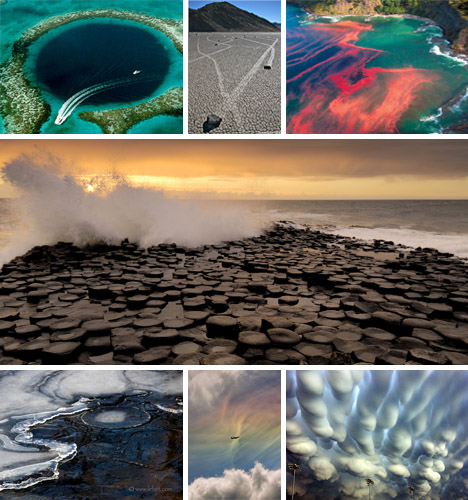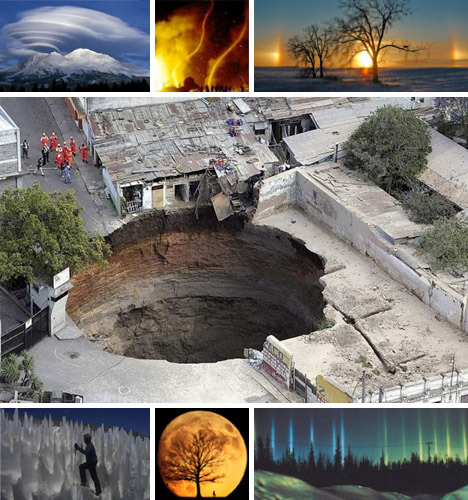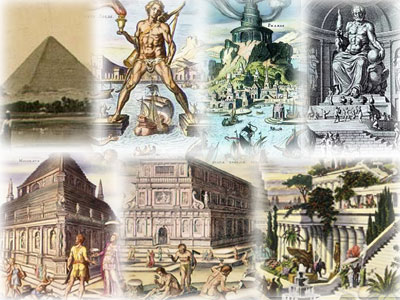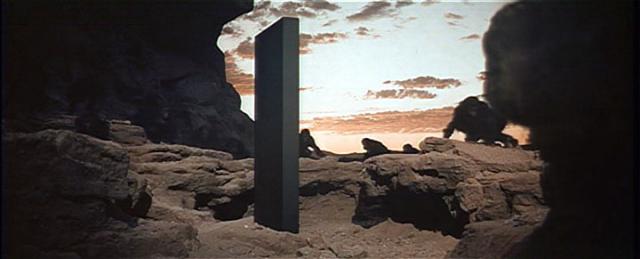Serendip is an independent site partnering with faculty at multiple colleges and universities around the world. Happy exploring!
Deep Time, Deep Space, Deep Play: Writing (to) the Future

Deep Time, Deep Space, Deep Play:
Writing (to) the Future
Anne Dalke, for the Open Conversations
on Evolving Systems
October 22, 2009
 |
[from "Forms are Converes of Meaning"]
Deep Time: recognition that humans, and human concerns,
originated in an extended period of time before humans existed;
Deep Field: enormity of space, relative to human experience of it;
Deep Play (per Clifford Geertz): games where the stakes are so high
that it is irrational to engage in them...
AND where the irrationality of the enterprise increases the meaningfulness of it all (?).
I take my starting point from a student named Jessica (April 2005):
I also like being reminded of how briefly we've been here. That's been happening plenty in this class, but I think I've been keeping evolution time and real time on seperate planes in my mind. Like there are the eons that Mayr and Dennet and Grobstein dealt with, and then there is the real time that Dalke and Barbin and (even) Eugenides live in.
This always happens in that course, "The Story of Evolution and the Evolution of Stories"
which Paul and I have co-taught now a number of times (2004, 2005, 2007, 2009):
a shift in scale from the history of the universe that,
after spring break, leaves me the belated younger sister,
functioning (only) in the (puny) human dimension of time and space--
along with forty students who mostly DO NOT "like
being reminded of how briefly we've been here...."
I pick the biggest books I can find--Moby Dick, Leaves of Grass,
am contemplating the Bible and Bhagavad Gita for next year;
but on the immense scale of the universe--of deep space and time--
I (and my humanist's bag of tricks) will never measure up.
So, today, I'm/we are going to do some deep play, take an irrational risk,
try to find some meaning in this game, this interminable conversation
where I arrived late (and which we will all leave early....).
My focus will be not be (as Paul's was two weeks ago) on systems that
lack intentionality, but rather on those that have it, and want to signal that they do.
In chosing that focus, I am picking up from the forum:
Doug, The language of agency: will "agency" and all of the language that goes with it (intentionality, story-telling, etc.) help with the understanding of these [emergent] systems?
Tim, Intention as Beaver Dam or Blindspot: Maybe...outcomes produced by intentional action are never what the conscious intent of story-tellers was aiming for because our minds don't really understand how complex causality really works....unexpected or unintended outcomes following on intended action are a sign of incomplete work...the leaks in a beaver's dam, yet to be plugged....
Paul: the phenomena of "unintended consequences"/"unconceived alternatives" might...be regarded as "features" or "assets," in that they provide the wherewithal to continue the ongoing process of evolving....
I want us to look this morning @ some of the outcomes produced by intentional action;
I want us to think about the degree to which they might actually be assets in emergence.
I want to do this through the lenses provided by
1) looking @ contemporary work in "transatlantic literary studies"
2) reversing Paul's "unintentional" ripple-patterns
3) re-asking Mike's question, tabled two weeks ago
(as Paul was explaining the "bidirectional causal relation"
among the active inanimate and the model builders):
"how far back we can trace the reverse arrow of causation?"
How deep are the reciprocal interactions?
4) using Tim's gift of Deep Time: How Humanity Communicates
Across Millennia, by the physicist Gregory Benford (1999).
![]()
I. Transatlantic Literary Studies
This week's NYTimes Week in Review reported on American Literature: Words Without Borders:
Three of the five candidates in the fiction category of this year’s finalists for the National
Book Awards were not born in this country; two of those three live abroad. 'The American
idea...disregards national boundaries.' Or: you don't need an American address to write
an "American" book.
Wai-Chee Dimock, Through Other Continents: American Literature across Deep Time (2006)
Dimock and Lawrence Buell, eds. Shades of the Planet: American Literature as World Literature (2007)
Susan Manning and Andrew Taylor, eds. Transatlantic Literary Studies: A Reader (2007)
Franco Moretti, Graphs, Maps, Trees: Abstract Models for a Literary History (2007)
(for a critique, see The Valve, A Literary Organ: Improving Circulation, Venting Steam...)
all these folks are studying the evolution of literature on expansive scales (both temporal
and geographic); others are helping me think, in particular, about the difference that the
internet is making in the evolution of literary and critical forms--
"The Digital Humanities":
Ed Folsom, "Database as Genre: The Epic Transformation of Archives" (PMLA,October 2007)
N. Katherine Hayles, "Narrative and Database: Natural Symbionts" (PMLA, October 2007)
But the American literary material looks backward, and the "digital humanities"
aren't looking far enough forward (yet), not beyond our current technologies.
What I/we have to do, to engage this deep play, to enter deep
time and space, is to stop looking backward, and head towards our
shared (contingent, unpredictable, improbable) future.
So I want to reverse both the pattern of Paul's ripples and Mike's question
about how far the arrow of reverse causation might go, to ask how--and
how far forward in time--we can project our intentions, and our meanings.
We're going to take an (imaginary) trip into the future together.
Step One: reversing the pattern test.
Paul asked us which of these was not designed,
and how we could know (how do we know that
the first five images were not designed?
are there any indices to non-intentionality?)
Variations of persistent pattern and explanations
Let's flip the question.
Which is these was designed?
How do you know?
Are there any indices to intentionality?





WebEcoist, 7 Phenomenal Wonders of the Natural World
WebEcoist, 7 (More!) Phenomenal Wonders of the Natural World
Modern Wonders of Green Design
New 7 Wonders
7 Wonders of the Ancient World
"Perhaps the most reliable wordless message to send across the millenia is awe....Great monuments...seek to carry messages through the ancient language of mass" (Benford 19, 21).
The great questions Benford asks in his book are precisely
the reverse of those Paul posed in our last session-->
Benford is prodding us towards recognizing,
not the power of randomness, as a generator of meaning,
but rather the opposite:
how would you recognize intention?
and how would you preserve the index to intentions?
Tim, Motel of the Mysteries: Benford isn't just satisfied to imagine a construct that could communicate that its builder was sentient: he wants it to reliably mean something across deep time, and he's savvy to the fact that meaning is slippery even in contemporaneous communications or representations.
Benford's game: devising long-term marks for nuclear waste
sites, a mission to Saturn, the Russian Mars lander.
He asks: how might we create a message that will say,
to the last of our species (or to new life forms that evolve):
This was made by humans! Pay attention!
Stay away (from nuclear waste)!
How to say "hi" across deep space and time,
how to be recognized as having (had)
intelligent and meaningful lives??
What qualities would make the message
recognizable to a reader we cannot imagine?
(It couldn't be text, or language;
it couldn't be on paper,
or on any other current technology....)
How would we assure that the reader would know that
there was conscious intention behind the message?
What would make the message distinctively
representative of an architect, a meaning-maker?
How to communicate that this is a pattern-with-a-purpose?
(Not to broach yet the question of how we would
assure that our future readers could actually
understand the meaning of our message...)
In Tim's terms: Makes you wonder about the arrow leading onward from story-tellers in Paul's diagram: is there a kind of information-storing or manipulating entity which someday plausibly could have agency which is compatible with and cognizant of emergent/evolving systems?...
One possibility: that we aim for the "obviously artificial,"
@ la the monolith in 2001: A Space Odyssey:

Another is that we mimic nature's non-intentional patterns:
Contemplating a message that could well outlast humanity....What sorts of messages can we transmit to our distant descendants in the language of the planet itself--in biological and environmental information? (Benford, 28)

7 modern wonders of green technology
I owe to another student, Julia Lewis, an essay by W. J. Thomas Mitchell,
"The Work of Art in the Age of Biocybernetic Reproduction,"
Modernism/Modernity (10, 3: September 2003), 481-500:
"we need a 'paleontology of the present,' a rethinking of our condition from the perspective of deep time, in order to produce a synthesis of the arts and sciences adequate to the challenges we face....If we are indeed living in a time of the plague of fantasies, perhaps the best cure that artists can offer is to unleash the images, in order to see where they lead us, how they go before us. A certain tactical irresponsibility with images might be just the right sort of homeopathic medicine for what plagues us.”
The problem w/ all these scenarios?...
is that the communication is one-directional:
we are trying to (imagine) sending a message, knowing that there will be no response. So the value of the indeterminacy and unpredictability of language (that we will not be understood exactly, and so learn back what we don't already know) is moot.
Mustn't an evolving system require something more than simple
"transferral of information": some interchange, and some alteration...?
(Mike's question again:) How deep are the reciprocal interactions?
A 10/13/09 New York Times article, The Collider, the Particle and a Theory about Fate,
also challenges the common assumption of unidirectionality:
We always assume that the past influences the future. But that is not necessarily true in the physics of Newton or Einstein. “For those of us who believe in physics,” Einstein once wrote to a friend, “this separation between past, present and future is only an illusion"....
Holger Bech Nielsen, of the Niels Bohr Institute in Copenhagen, [one of whose projects] is an effort to show how the universe as we know it, with all its apparent regularity, could arise from pure randomness, a subject he calls “random dynamics"...
and Masao Ninomiya of the Yukawa Institute for Theoretical Physics in Kyoto, Japan, [have put forward the idea that the Large Hadron Collider] is being sabotaged by its own future....the hypothesized Higgs boson, which physicists hope to produce with the collider, might be so abhorrent to nature that its creation would ripple backward through time and stop the collider before it could make one, like a time traveler who goes back in time to kill his grandfather.....
This is a story about the future communicating w/ us.
My questions have been about how/can/might (do we want to) communicate w/ the future?
A discussion summary (Paul)
To further explore the difference between emergence and "intentionality" (story telling) and the question of "reverse arrows of causation" Anne offered a larger array of pictures and the challenge of whether a being could successfully signal to future beings that it itself had "intentional" (story telling) capabilities.
In looking at the images, a number of suggestions were made about how one might infer "intentionality" (story telling): multiple different patterns in a small space, imperfections in a generally patterned region, "the data too good." It was also suggested that there was in fact no certain way inherent to an image of saying whether it was the product of "intentionality" (story telling) or not since, in principle, any image can be created, given enough time, by a random generator (by analogy to typing monkeys producing The Tempest). Various cues can be used to estimate the likelihood that an image involved a design/intention but the key issue was whether the observer attributed to the processes involved in creating the image an intention to convey meaning.
Two issues "tabled" at this point were
- Can there be patterns independent of human observers?
- Can there be "intentionality" independent of humans?
The question of the communicability of "intentionality" (story telling) provoked a number of responses, including some questioning of why one would or wouldn't want to. One point was that all communication depends on technology, on some mechanism to decode a message, and that one had no way of knowing that the appropriate decoders (eyes, a CD player, a computer running a particular operating system, etc) would be available at any future time. Without it, there could be no communication of a message into the future, regardless of intent of the message. A second point was the thought that one may not be in principle be able to infer "intentionality" (story telling) without reciprocity, ie without the receiver being able to respond to the message and elicit a new message. This may be an important limitation on the assessment of "intentionality" (story telling) both from the future about the present and from the present about the past.
A third issue in thinking about the future was the issue of whether the very concept of a future was itself an "intentional" (story telling) concept, in being itself a "counter-factual." There is what we experience and then there is an imagined "what is not being experienced now," a counter-factual, ie the "future" (and, for that matter, the past).
[note added by meeting summarizer: I've used "intentionality" (story telling) throughout this summary instead of simply intentionality because there seemed to be some ambiguity in exactly what the latter term was intended to convey by different people at various points in the conversation. More on this in my own comments below]



Comments
"Speculative realism"
Liz just shared with me the current Chronicle Review (October 23, 2009) on "Confronting the Animal."
Like her, I see much overlap here w/ our conversations in the Evolving Systems group, along w/ some push back...Evidently (do you know anything about this trend, Bharath?) both the analytic and Continental traditions have begun questioning the "implicit anthropocentric bias that dominates philosophy," trying to "break apart the idea of the human subject as the center of things." This leads to one curious practice called "speculative realism," and to another called "speculative psychology," which is devoted to "ferreting out the specific psychic reality of earthworms," and of stone...
What really interests me in these nascent fields is their insistence that "we live in a huge nonhuman world": "Unique human adaptations might be understood as the outer skins of an onion; the inner layers represent a much broader, deeper, and evolutionarily more ancient set of moral capacities shared by many social mammals...the vast majority of human moral behavior takes place 'below the radar" of consciousness...rational judgment and self-reflection actually play very small roles in social interactions."
So it's fun for me to think about how and where our discussions on Evolving Systems--which are looking so insistently @ what happens to the process of emergence when humans enter the picture--"rub up" against these new areas of inquiry. Are we attending to "human exceptionalism" just @ the time that the animal studies people are de-emphasizing its importance? Are we over-emphasizing its role in cultural evolution?
situating humanity: culture as the outer layer of an onion
"Are we attending to ... overemphasizing ... ?"
Which we? At least some of us have been arguing for some time that "human adaptations ... [are] the outer skins of an onion" with regard to not only morality and society but many other things as well (cf The brain and social organization / culture). And that idea is inherent in the project to situate "meaning" etc in a larger pattern of evolutionary change. It was also, of course, a component of Darwin's program (cf The Expression of the Emotions in Man and the Animals), and of William James' motivation in founding American experimental psychology ("it is psychology that shapes philosophy"). Nice to know that contemporary philosophers are catching up. Whether they are conscious of the connections or not.
That's interesting. I haven't
That's interesting. I haven't heard of these trends in philosophy. Some version of this kind of a view is in Dewey, Wittgenstein and Heidegger (different as they were), though I am not sure if advocates of "speculative realism" emphasize the connection to these thinkers.
The Linguists
It's of interest to me to learn that, as we are talking about the possibilities of writing to the future, some of our colleagues are busily @ work trying to preserve the languages of the past...what role might they, and their archival process, play in evolving systems?
5-6:15 p.m. on Thursday, November 5th, in Thomas 110, Bryn Mawr College:
Screening of The Linguists, "a poignant chronicle of two scientists — David Harrison (Swarthmore College Professor) and Gregory Anderson — racing to document languages on the verge of extinction. In Siberia, India, and Bolivia, the linguists confront head-on the very forces silencing languages: racism, humiliation, and violent economic unrest. David and Greg's journey takes them deep into the heart of the cultures, knowledge, and communities at risk when a language dies. The Linguists was an official Selection at Sundance Film Festival."
letting go ...
Maybe the disappearance of languages/species/ethnic groups/individuals happens for reasons in addition to "racism, humiliation, and violent economic unrest"? Maybe "death" is actually a valuble part of evolving systems, and things don't actually "die" but rather persist as essential ingredients of new languages/species/ethnic groups/individuals?
clarifying intentionalities
Lots of interesting stuff, thanks Anne/all. I've mentioned most of the things that I want to continue thinking about in my summary notes above. In a general sense I like very much the notion that one needs reciprocity to test for intentionality/story telling, and the movement to think about this in terms of information, coders, and decoders. For more on language/ambiguity/reciprocity, see Why Words Arise and for more on information/coders/decoders see Information? An Inquiry.
What the session also did was to give me the feeling that we need to be a little more deliberative in our use of language, lest we get into loops of misunderstanding with each other and with others. In the session, we had a tendency to use the word "intentional" as a short hand for a distinction between model builders and story tellers that I had suggested in a previous session. The problem with doing so is that "intentional" has at least two more accepted meanings, a common one and a technical philosophical one, that are different from one another. Both are related to but not the same as the characteristic I was trying to point to. So, to try and forestall misunderstandings and perhaps even to help both us and others move in some new directions, the table below ...
"phenomena which contain an object within themselves"
"the power of minds to be about, to represent, or to stand for things"
Intentionality/story telling - proposed evolving systems usage
Hope this is useful.
Talking to the future: they have interesting ideas
Interesting buildings of the future:
http://www.huffingtonpost.com/2009/10/19/amazing-architecture-11-i_n_326249.html
Motel of the Mysteries
The thing I find interesting about Benford is the basic fun of the challenge he sets: could you intend, as an agent, to communicate across many millennia to future "story-tellers", sentient minds. I like that he's seriously considering the problem of meaning, which (no offense) I find that a lot of natural scientists who want to address cultural representation, interpretation of texts, communicative action and so on tend to take an end run around. Benford isn't just satisfied to imagine a construct that could communicate that its builder was sentient: he wants it to reliably mean something across deep time, and he's savvy to the fact that meaning is slippery even in contemporaneous communications or representations.
Archaeology strikes me as very "good to think" about this problem. I'm always uneasy when archaeologists (or paleontologists, for that matter) make claims about meaning from artifacts where almost all we have is the artifacts found in a particular location of a particular site. That cave paintings or ornate knives or wine jugs with phallus-shaped spouts meant something, I don't doubt. But I know very well that the African art objects which we today look at in museums either as evidence about a particular ethnic culture or for their aesthetics weren't made or intended to serve either of those purposes. I can make up a lot of very plausible just-so stories about cave paintings and still readily concede that there's others that I can't even imagine.
One of my favorite deceptively funny meditations on this issue is David Macaulay's Motel of the Mysteries. The basic schtick is that it's about an archaeological dig in mysterious Usa, where the ancient Yanks once lived. The dig uncovers the artifacts of a roadside motel, but the archaeologists imagine that they're in a royal tomb instead. (There's a lot of sly humor at the expense of Howard Carter, discoverer of Tut's tomb). It's very light, but it lays out the hubris of thinking we can know meaning across deep time. But we want to--and not just so we can warn our descendents away from radioactive waste.
meaning: declining the "end run" and offering an alternative
Yep, I think the issue is precisely "meaning" and how to talk about it in a language that makes it possible to bring to bear physical and biological observations as well as observations of social scientists and humanists. And that is I think the central challenge for the evolving systems project. My offering along these lines, of course, is that the ability to create and act based on counter-factual stories is the origin of "meaning." Without that, there would be lots of things happening emergently, but no "meaning."
Post new comment